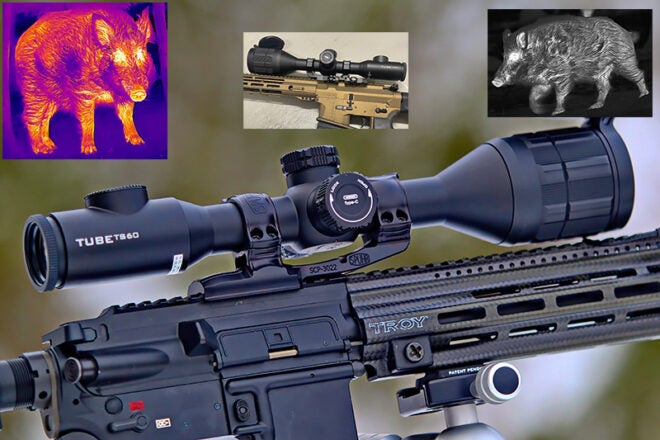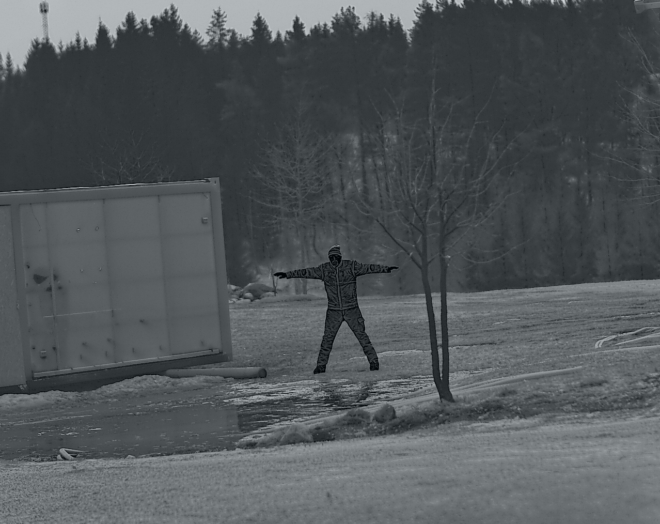This is a review of the Infiray Outdoor Tube TS60 which was introduced just now at the IWA OutdoorClassics 2024 exhibition in Germany. TFB got an exclusive opportunity to try it out about two months before its official release, and here’s the story in words and images.
Infiray Outdoor Thermals @ TFB:
- TFB Review: Infiray Outdoor Tube/Bolt TL35 SE Thermal Riflescope
- TFB Review: InfiRay Tube TH50 Thermal Imaging Riflescope
- TFB Review: Infiray Outdoor Zoom ZH50 V2 Dual FOV Thermal Monocular
- TFB Review: Infiray FAST FAL19 – Red Dot Thermal Fusion Sight
Why should you continue reading? Well, the Infiray Tube TS60 has a 1280×1024 pixels thermal sensor, 12 μm and an NETD of <18 mK and a frame rate of 50 Hz. The objective lens is 60 mm/F1.0 and the magnification ranges between 2-16x (8x). Very impressive specifications and the thermal image quality is exceptionally good as a result.
Below: Heckler & Koch MR223 with the Tube TS60. Most high-end thermals have 50 mm lenses, this one has 60 mm.
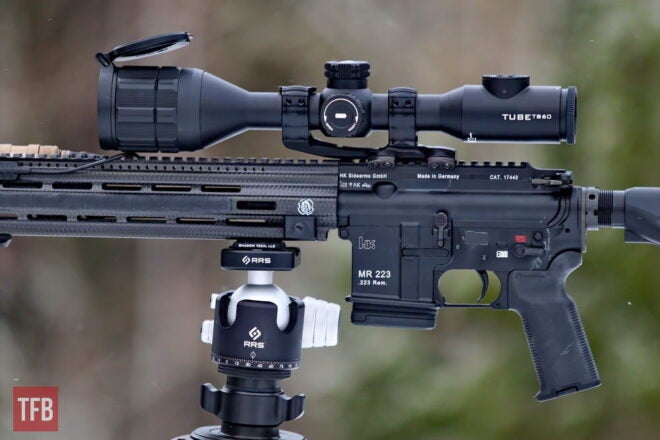
Handguard in carbon fiber from Troy, and a slim hunting line mount from Spuhr. The 60 mm front lens does clear the handguard, but it’s a close call and something to watch out for on your rifle.
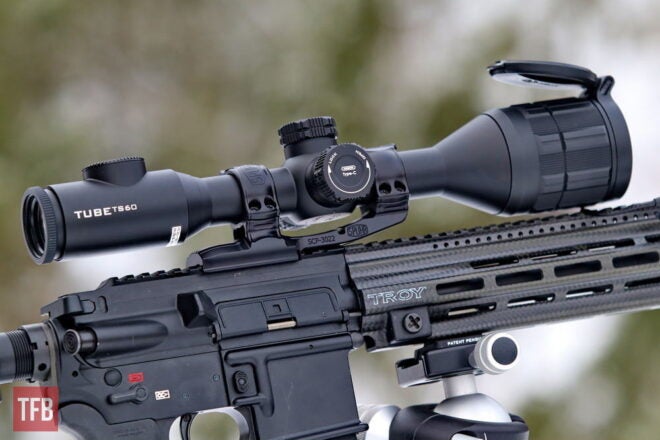
The TFB’s review goes on, even if it’s snowing or raining. In fact, we love it!
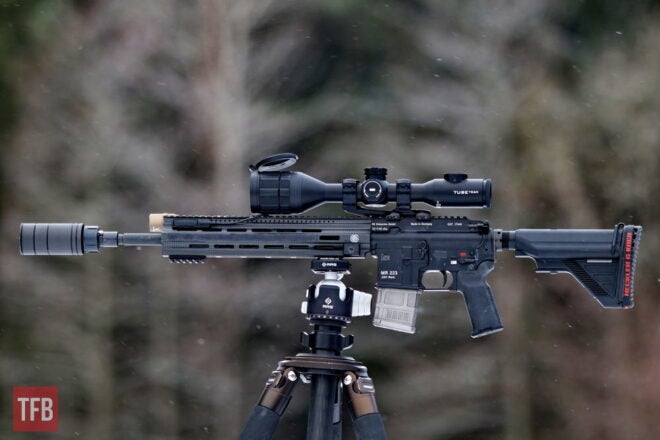
Technical Specifications
According to Infiray, the thermal sensor is developed by themselves and uses 1280×1024 pixel resolution with a NETD of sub 20mK. This is the first thermal I’ve reviewed with such a high resolution, and to my knowledge probably for TFB as well. The result is presented on a 1.03-inch, 2560×2560 round AMOLED display. Infiray are now offering 7 distinct color palettes for users to choose from, most of which you will see while scrolling around this review. The detection range is claimed to be 3100 meters, which is hard to test. The detection range has in reality kind of lost its importance when we’re talking this kind of un-shootable distances anyway – all I can tell you is that the Tube TS60 for sure can spot objects really far away.
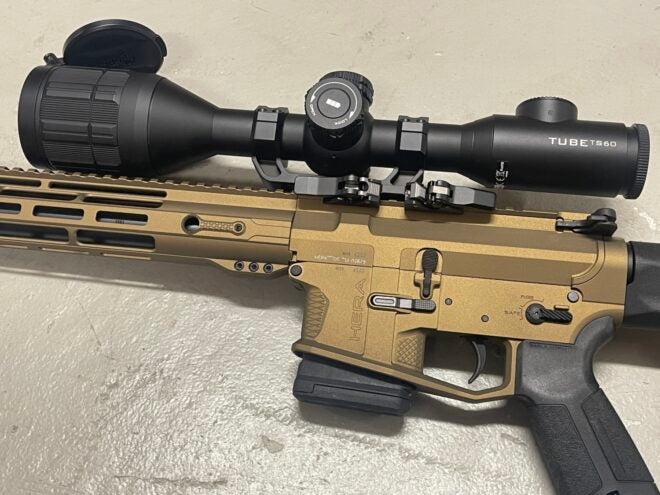
The new Golden Standard? – HERA Arms with Tube TS60.
There’s an optional 1200-meter laser rangefinder to buy if you want one, but it was not tested as it was not provided for review.
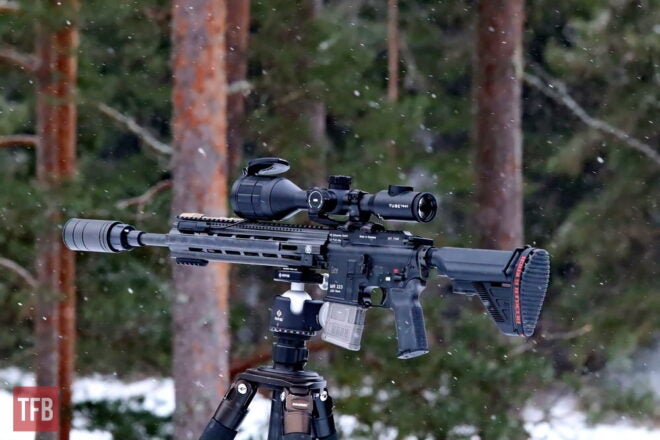
Tube TS60 on top of a Heckler & Koch MR223, with a Cerakoted medium capacity magazine. The handguard in carbon fiber is from Troy, and I understand not a lot of them were made. The QD suppressor is from SAI Denmark and fits any A2 flash hider.
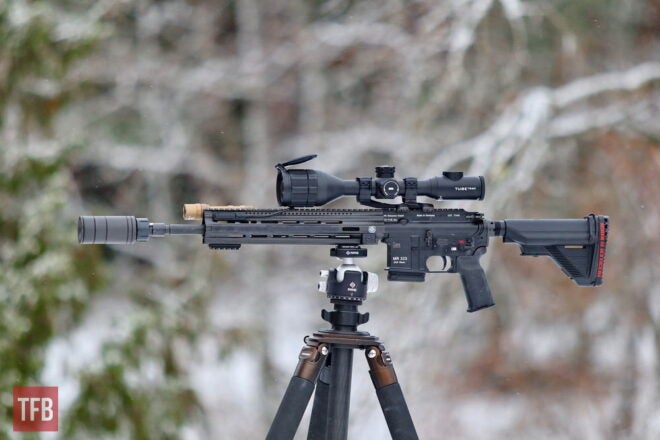
The tripod is an Innorel RT90C Carbon Fiber Tripod with a Really Right Stuff BH-55 Ball Head. Kind of combining the cheapest with the most expensive on the market, but it serves me well.
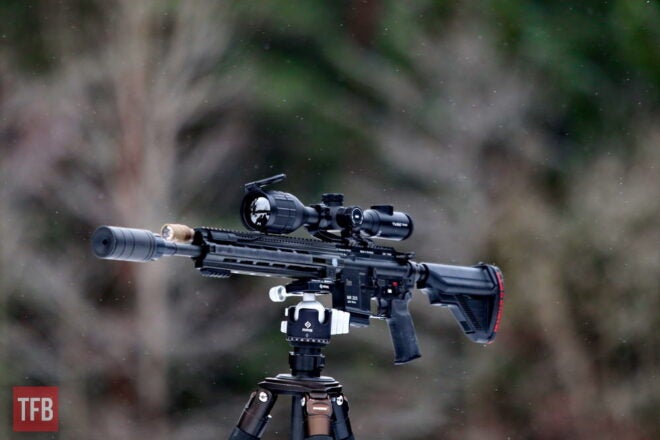
It’s snowing!
Below: The on/off button is in a light grey color, which makes it easy to index in the dark. The buttons have a good feel, and it’s rare to not get the tactile feel – an improvement over (most) other Infiray products.
The “encoder” on the ocular does not move or have any functionality. Instead, the encoder for the user interface is located in the top tower.
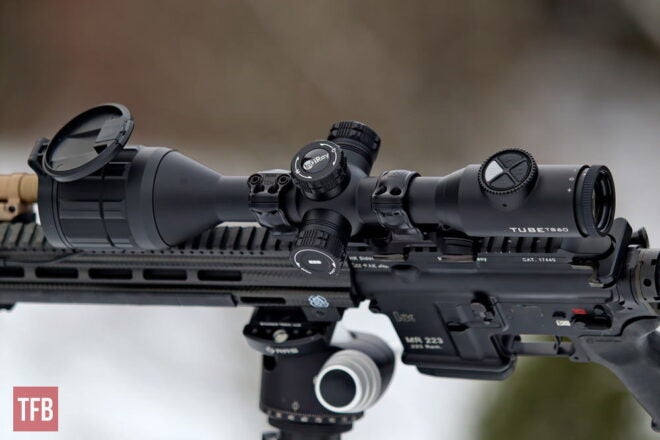
I swapped the Infiray mount for the Spuhr SCP-3022 Hunting Line (0 MIL/0 MOA – Height: 38 mm/1.5”) with an MSRP of €236.30 (+VAT). In the US this is sold by Mile High Shooting. This mount works really well and has a much more stealthy look than the normal Spuhr ISMS mount.
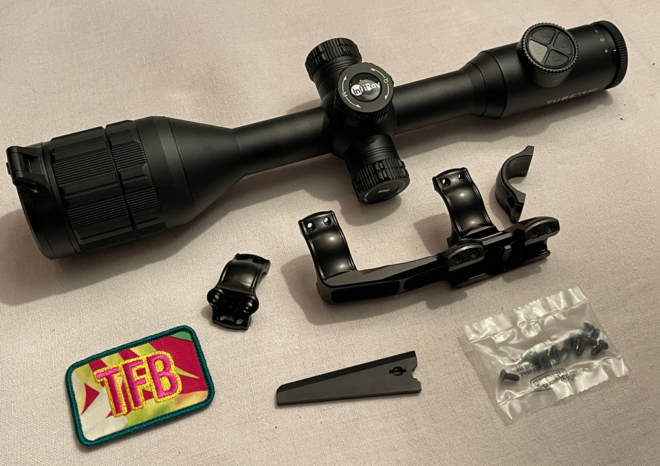
The Hunting Series version of the SP-3022. The SCP-3022 is designed for use on Picatinny rails and features one classic ring and one interface ring, which can be rotated as to position the interface/accessory in either the 12-o’clock or 3-o’clock position. The SCP-series of mounts feature two separate side clamps and allows the scope to be mounted 70 mm/2.76” further forward than with a non-cantilever mount.
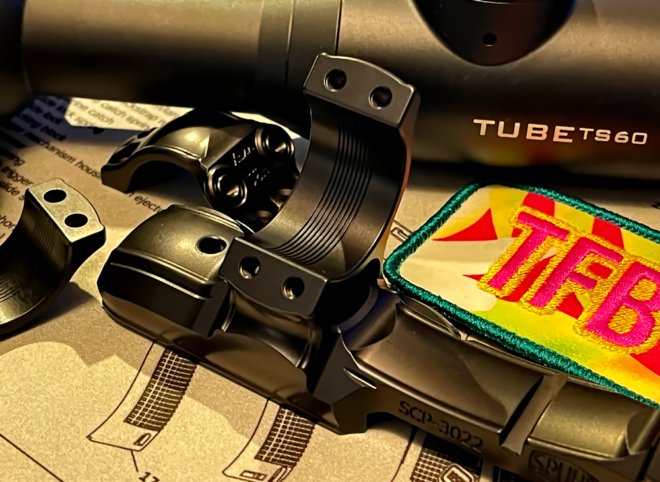
A size comparison between the Infiray Outdoor Tube/Bolt TL35 SE Thermal Riflescope (top), which TFB reviewed recently, and the new Tube TS60. In case you wonder why some thermal riflescopes have a higher price than others, this should give part of the explanation. 60 mm is massive!
Note the magnification ring on the TL35. I really like this solution, and consider it better than the location on the center tower on the TS60. Another thing to consider is the quality of the two mounts. One comes for free, the other one you can rely on…
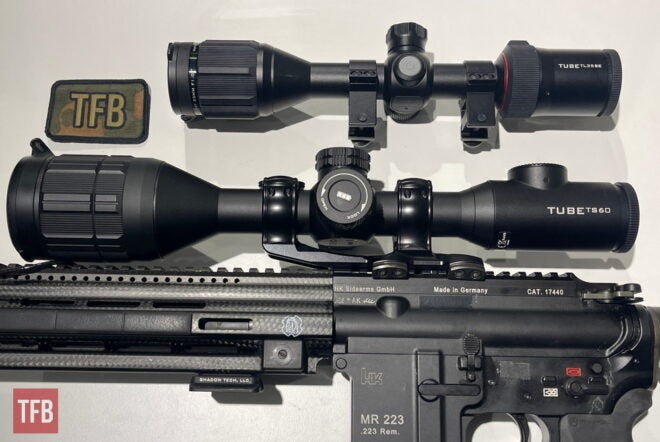
Germanium is a metalloid element with unique properties. Germanium is used as a lens material in thermal imaging cameras. The material’s transparency to infrared radiation allows it to be used in lenses that focus thermal infrared radiation onto detectors, enabling the creation of thermal images. Guess what, the bigger the lens and the sensor the better the image quality.
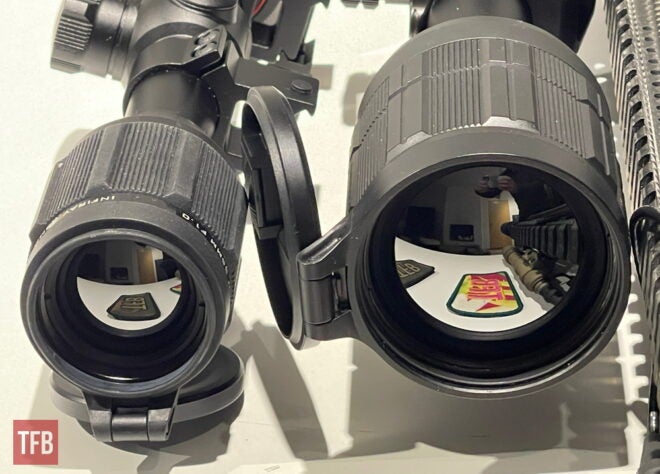
The weight of the Tube TS60 is specified at just below 1 kg (990 grams).
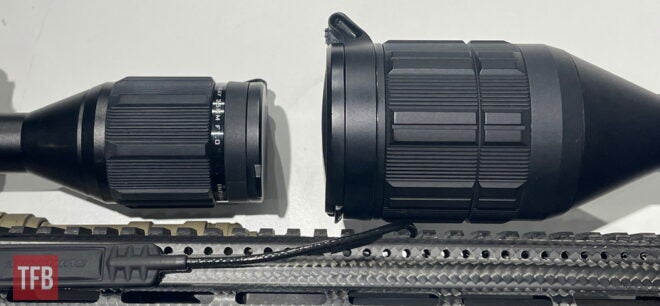
Here you can control the magnification and most of the setting. The side caps for the USB-C and the extra battery can be tricky to get back into position once you get them off – I almost gave up.
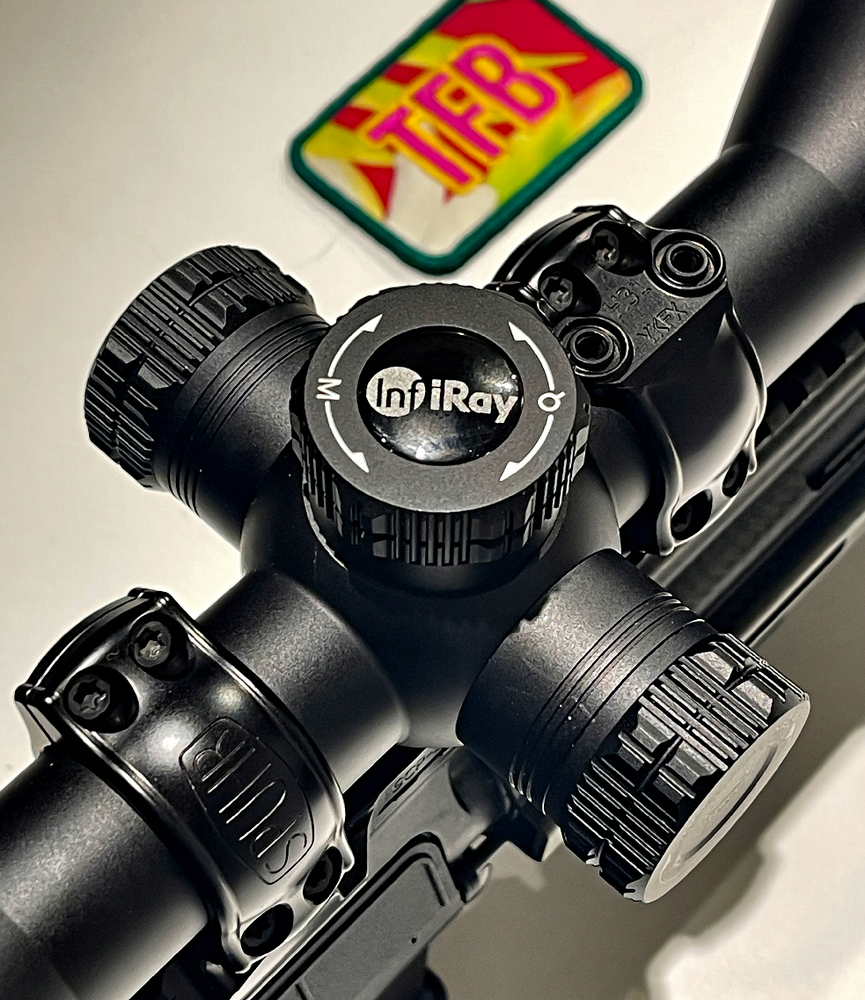
Here you can control the on/off, brightness, camera & video. The “P” will swap from white hot to black hot to green hot to red hot and so forth.
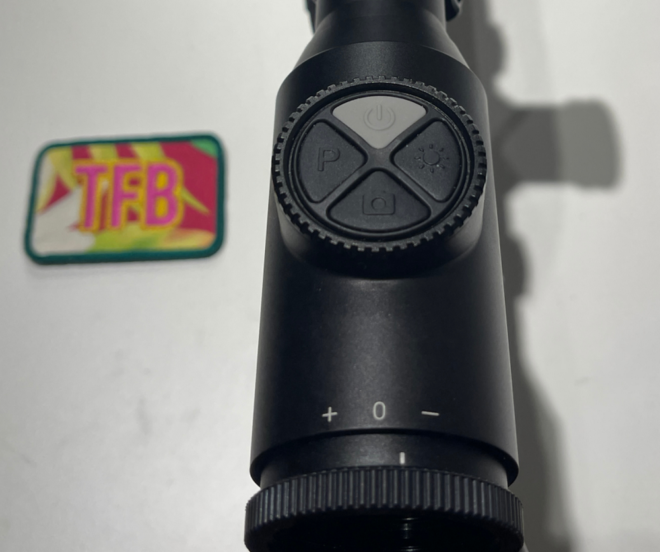
Wintertime, driving into the wilderness listening to “Keep the wolves away” (see top of Audi screen). Pretty suitable music for the occasion, since there are wolves in the area.
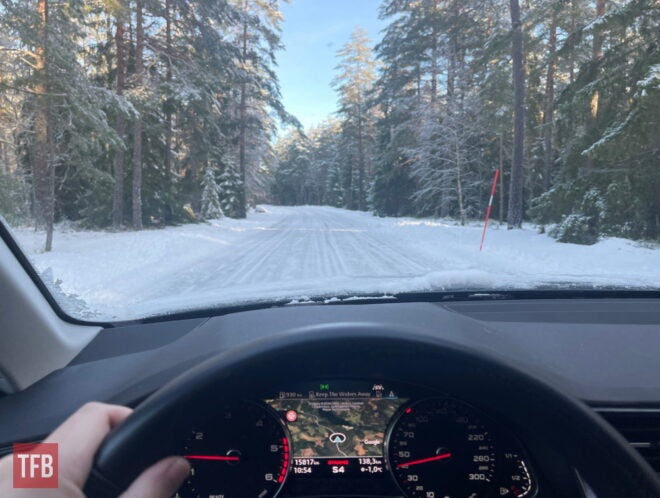
Wildlife park. There’s nothing special with this image, but there are two domesticated deer close and a herd of not-so-domesticated ones hiding in the forest (top). Unfortunately, quite a lot of the image quality is lost as I upload and convert it, but watching the herd move in the forest was awesome.
As I enter the park there are about 400 eyes and ears following each step I take and they keep at least 200 meters away at all times. Even at this distance, they keep track of me.
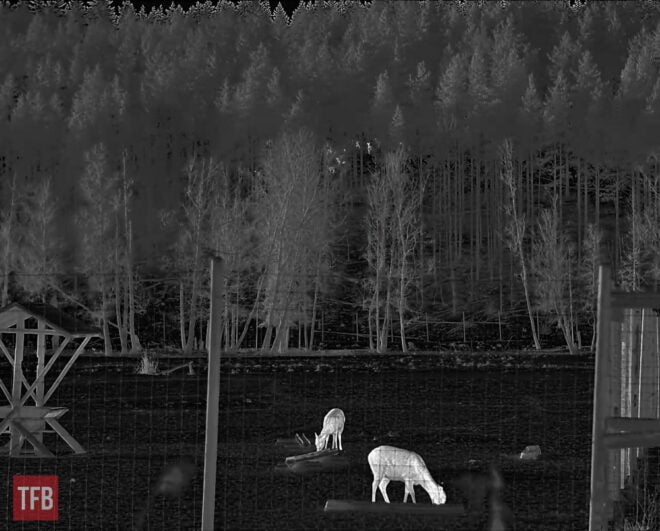
Here’s the herd and seeing this live, as they move through the forest, was quite an amazing experience.
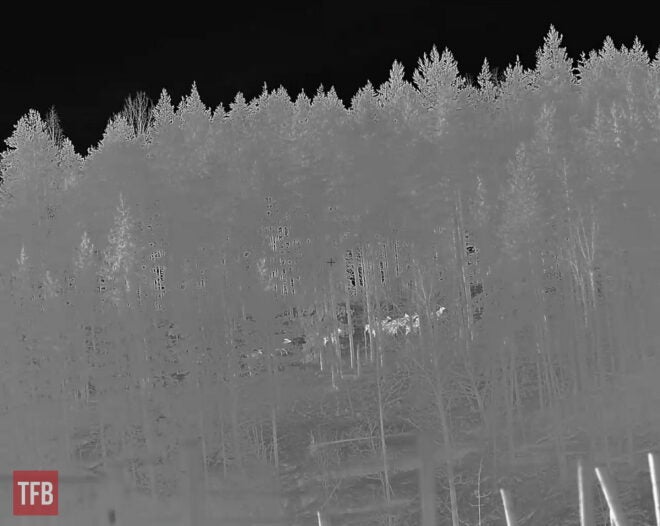
Ready for some Mouflon Sheep? First, the ones that are no longer with us.
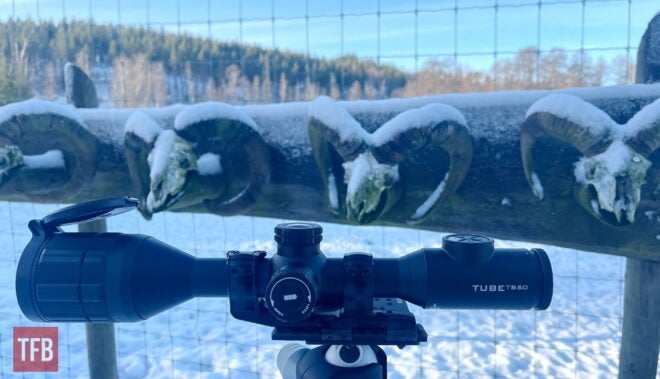
But these guys certainly didn’t like my presence.
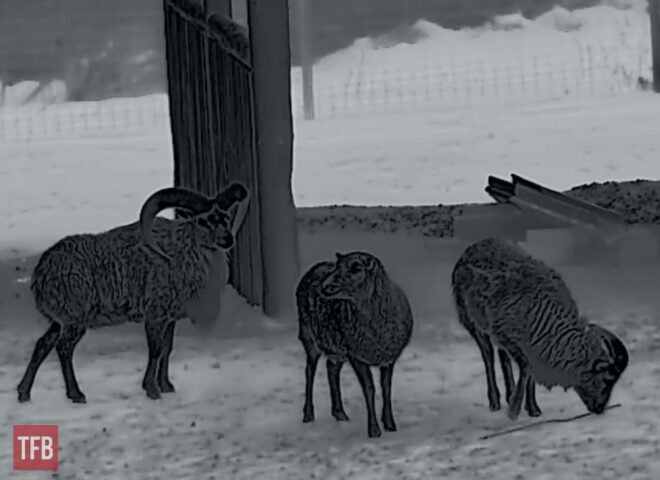
Mouflon rams are a species of wild sheep native to mountainous regions in Europe and Asia. They are known for their distinctive curved horns, which can be quite impressive in size. Mouflon rams are social animals, forming groups led by a dominant male. These sheep are herbivores, feeding on grasses, herbs, and shrubs. They are also known for their elusive nature, making them challenging to hunt in the wild – a long distance is needed for sure.
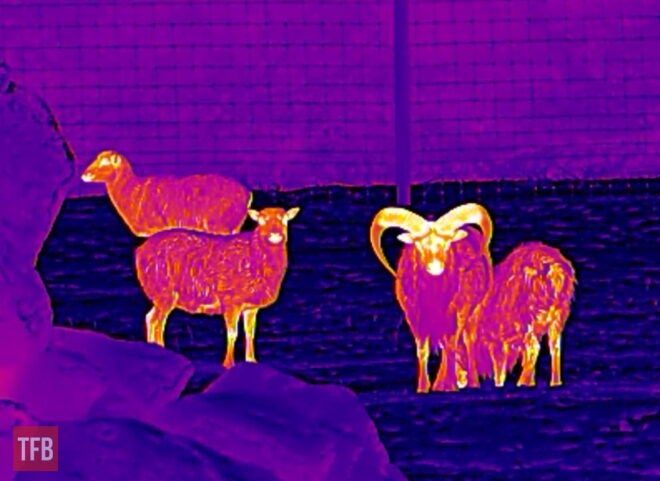
Infiray Outdoor’s Tube TS60 Thermal Scope
It’s time for some wild boar. Wild boars are known by different names in different regions, such as wild swine, wild hog, or feral pig. Wild boars are highly adaptable and are found in a variety of habitats, ranging from forests and grasslands to wetlands and agricultural areas. They are opportunistic feeders, consuming a diverse diet that includes fruits, nuts, roots, insects, small mammals, and carrion. This adaptability has contributed to their successful colonization of different ecosystems around the world.
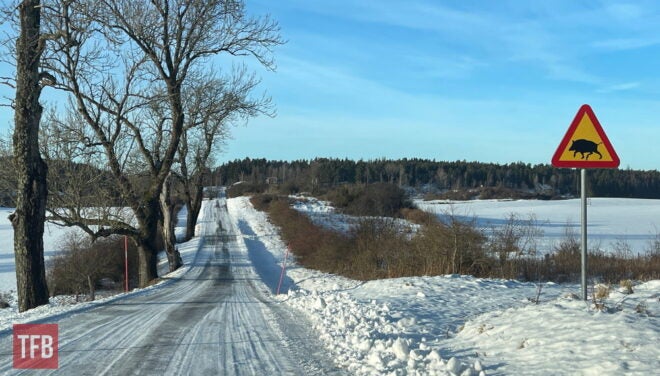
The first image of a wild boar with the Tube TS60. I sneaked in, but these guys aren’t stupid. I had a lot of vegetation in front of me, hence the somewhat obscured image. I think the distance was about 100 meters.
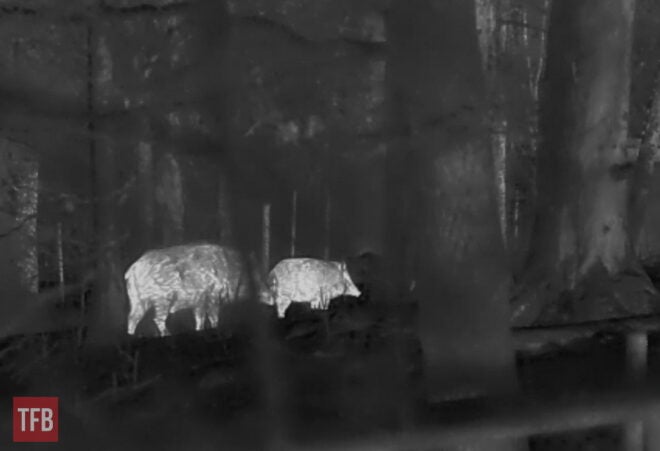
Finding a better location for my photo session.
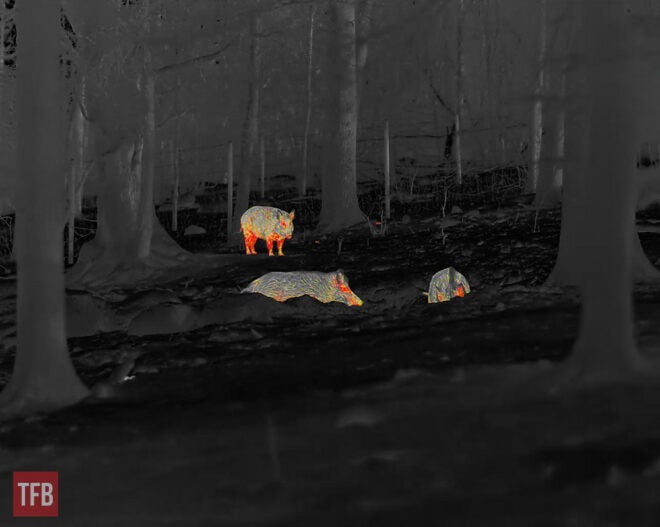
iPhone image, to give you an idea of the setting. Daytime, wintertime, snow and about +4C, light wind.
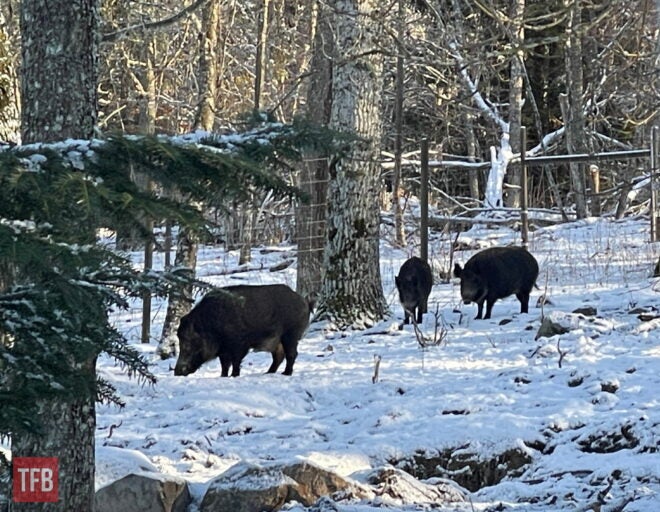
Here’s the ocular of the Tube TS60, with a round image, icons, etc. The base magnification is 2x, with 16x as the maximum.
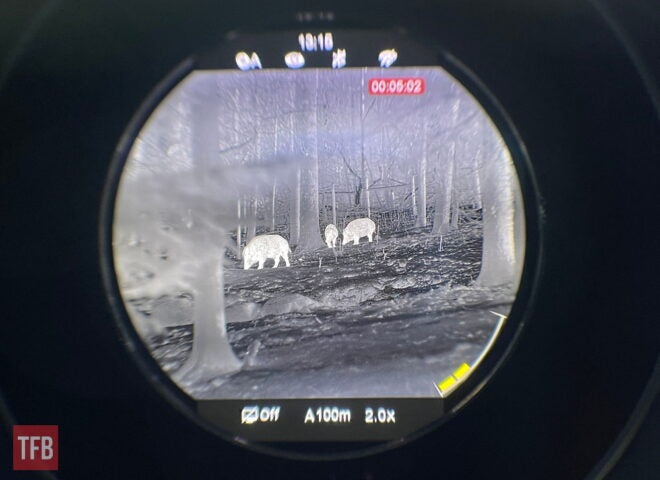
Red hot.
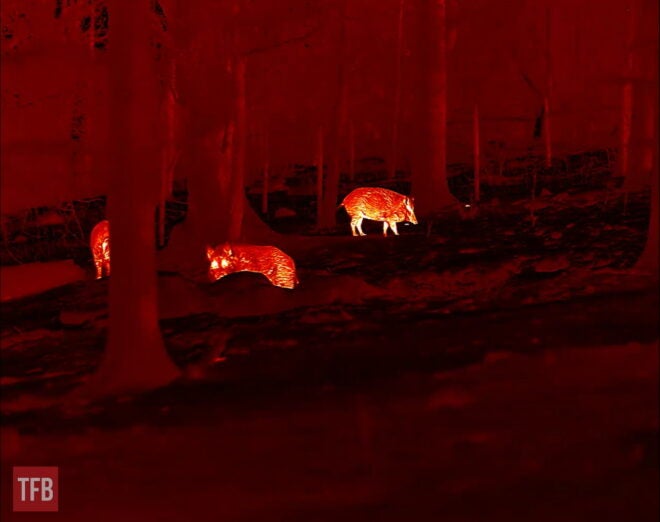
As they move closer, it gets quite terrifying.
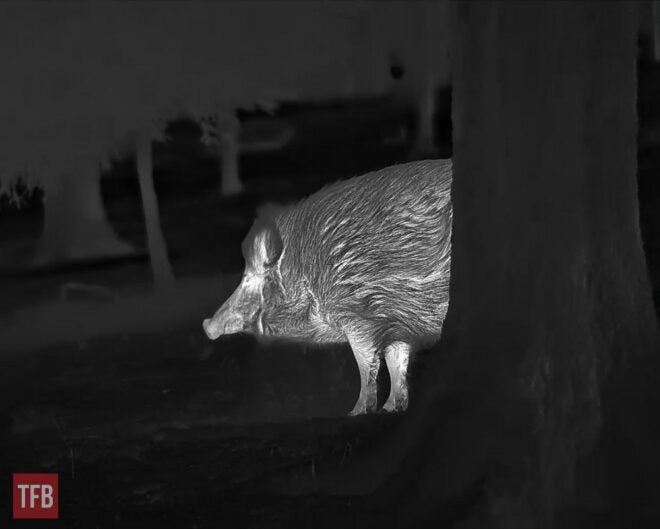
Zooming in, and the TS60 still keeps quite a good image. When looking into the ocular, you get info about which magnification you are using, but this gets lost in the video and images and it’s impossible to remember which setting I used for each image.
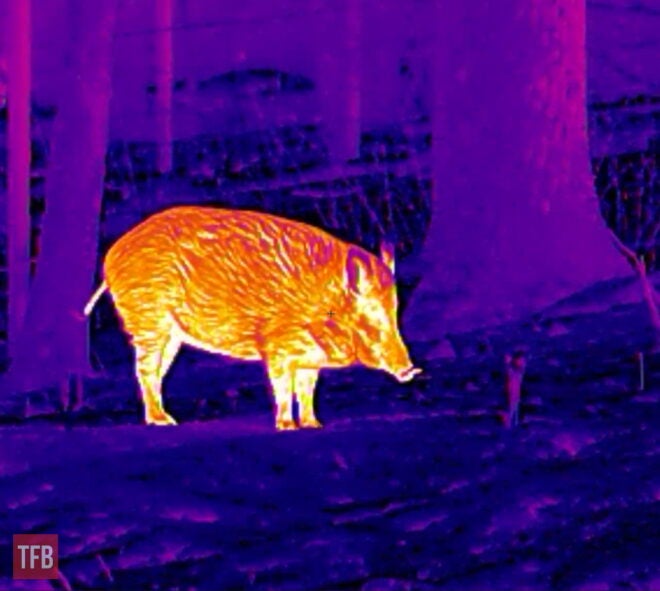
This is at 2x, close range.
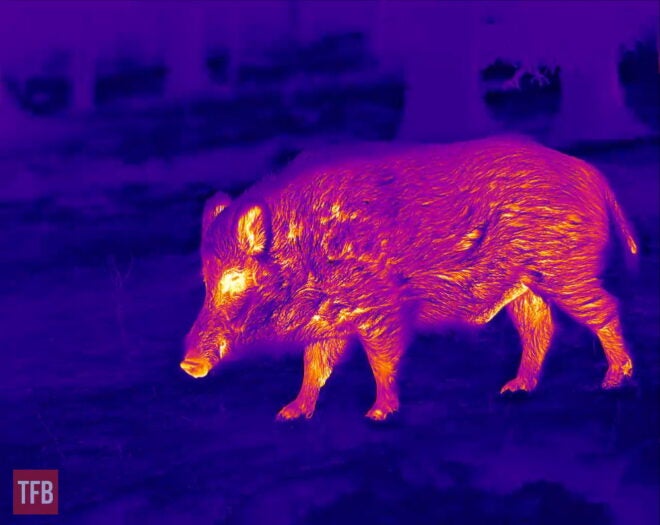
Terrifying animals.
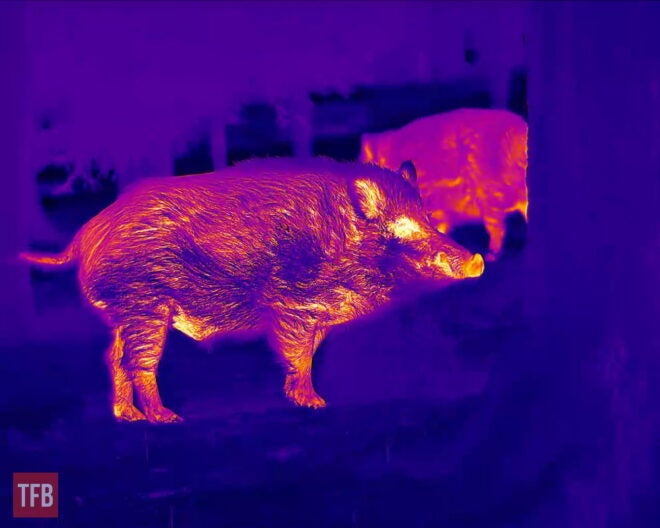
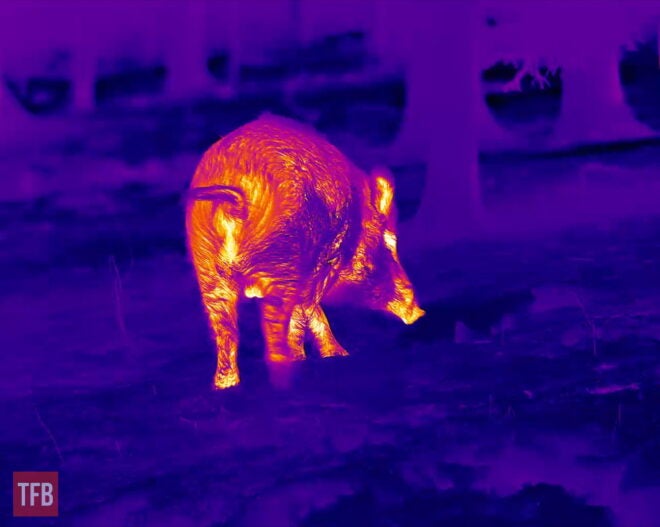
Big balls of fire.
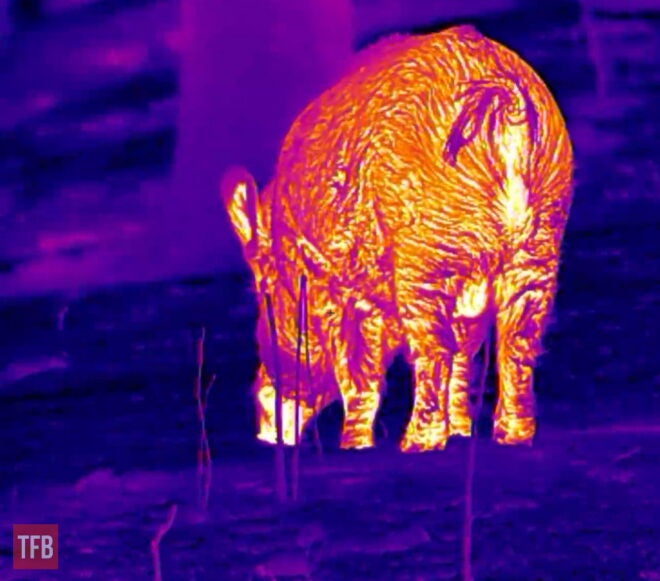
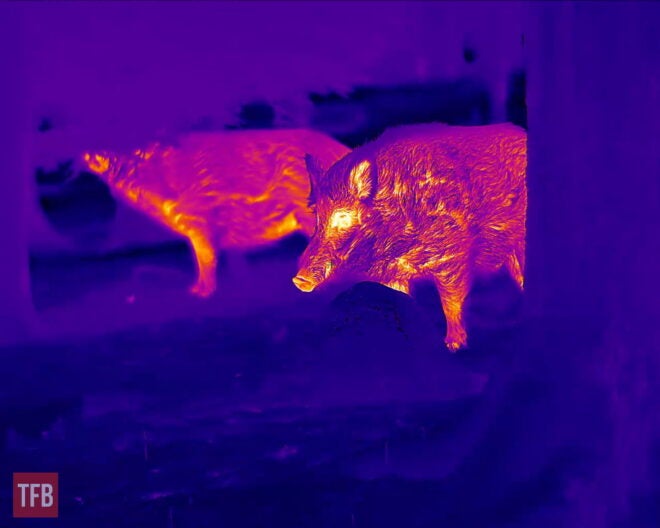
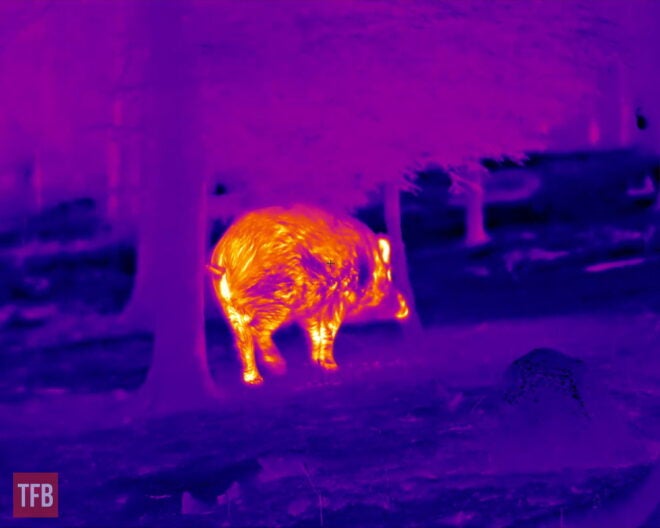
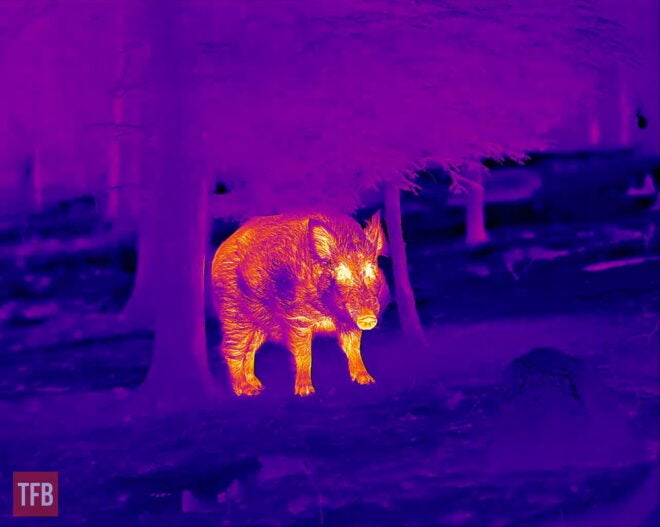
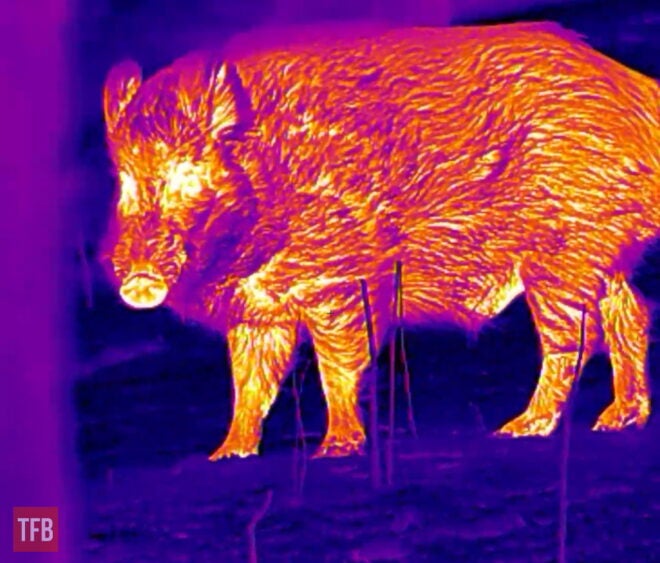
Infiray Outdoor’s Tube TS60 Thermal Scope
The Pig Hulk – green hot is a new one to me. While it works, it’s not my favorite. Perhaps something for the night vision guys and their green tubes? How do you like it?
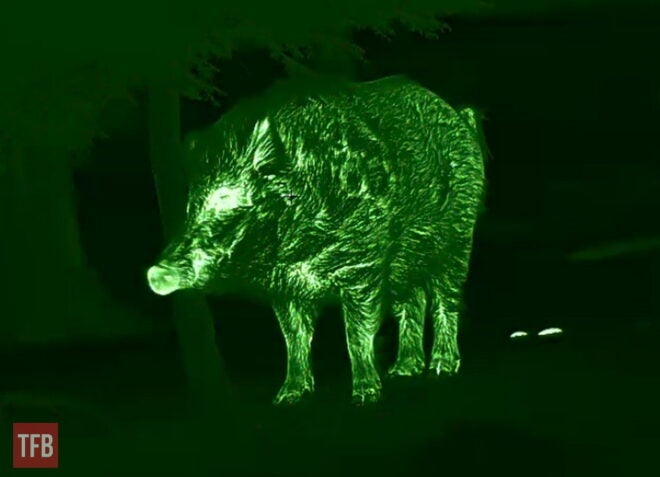
White hot. I deliberately chose the smallest reticle and in black to avoid distractions in the image.
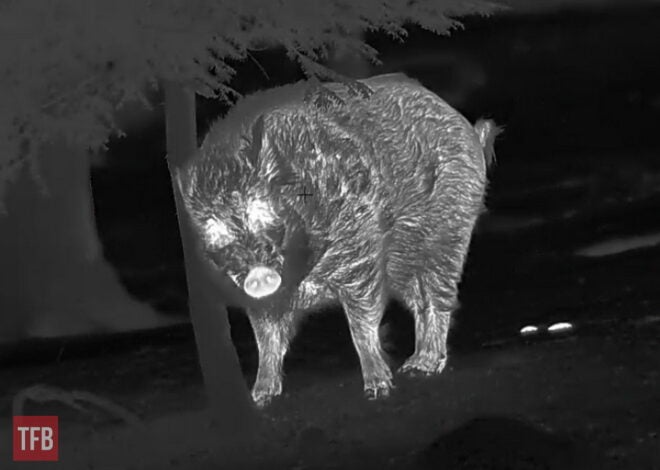
DO NOT PET!
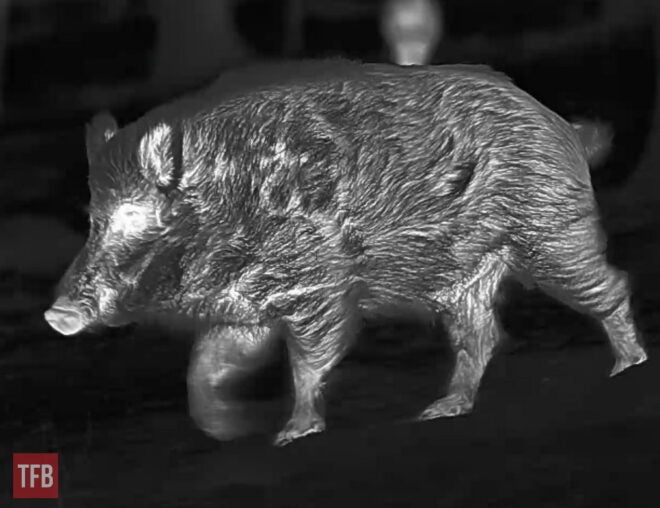
Hot like red lava.
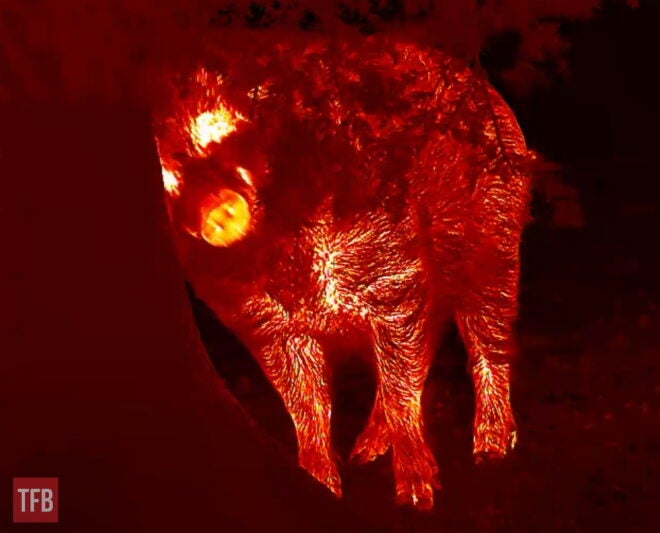
Below, no this is not a thermal but a reference to the distance which is very close, and what it looks like in real life, as the boar scrubs itself against a tree.
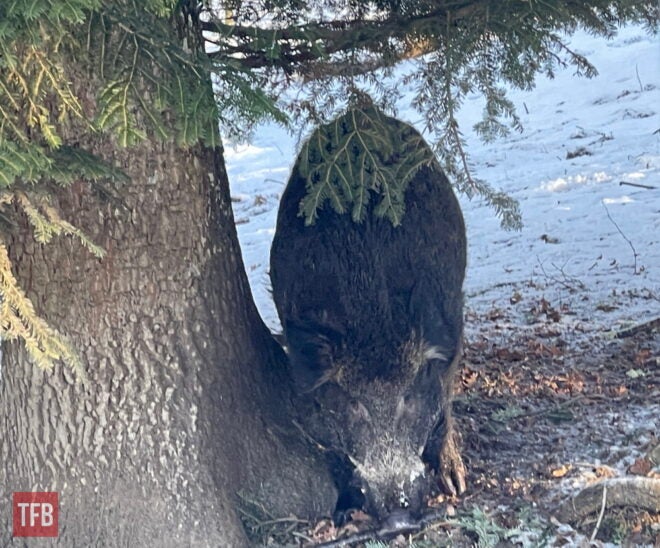
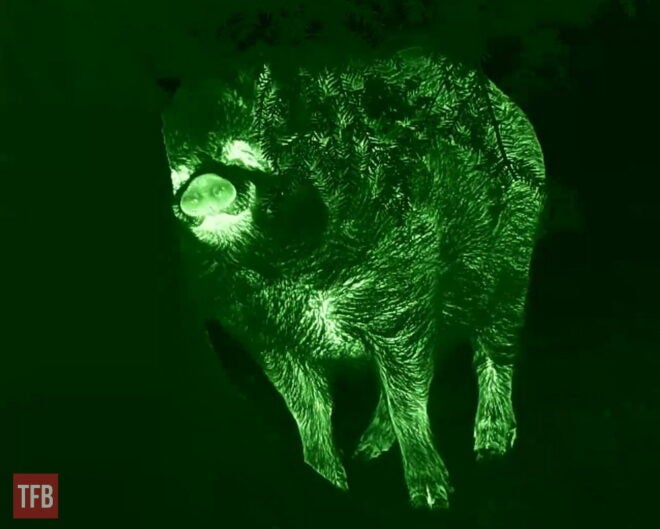
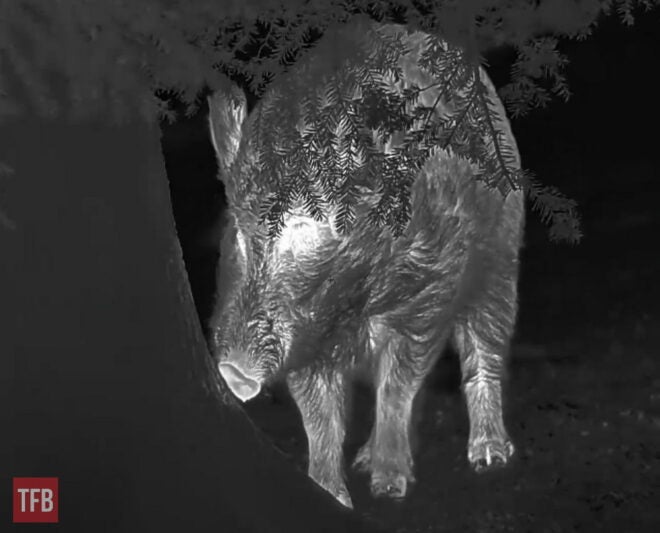
Again, black hot is amazing.
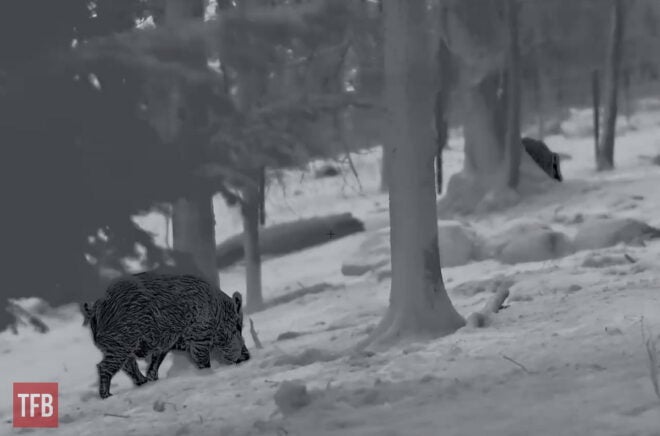
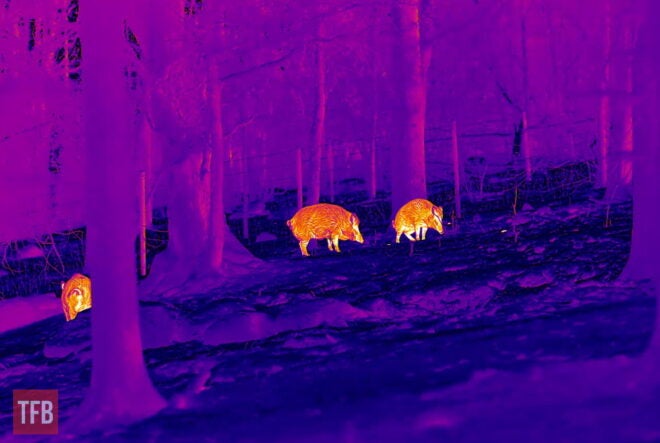
Yellow hot, with purple. Let me be honest, not sure about this color combo and how much it would be used.
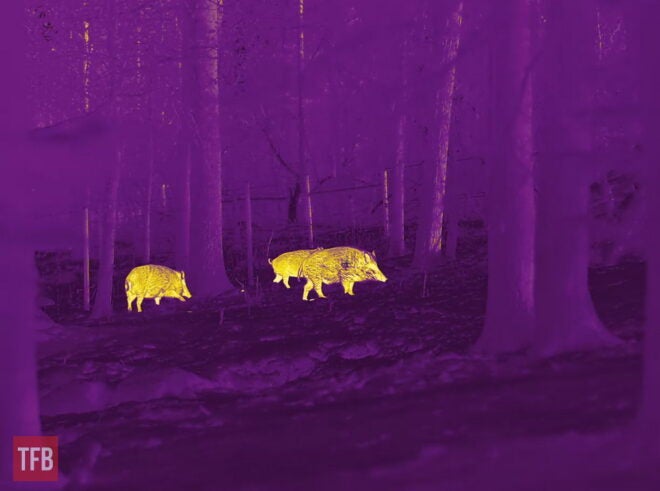
While the images above are from the wildlife park, the ones below are out in the wild. I don’t think anyone hunts on these grounds. From a distance, I first thought these were cows due to their size. There are some piglets up to the left.
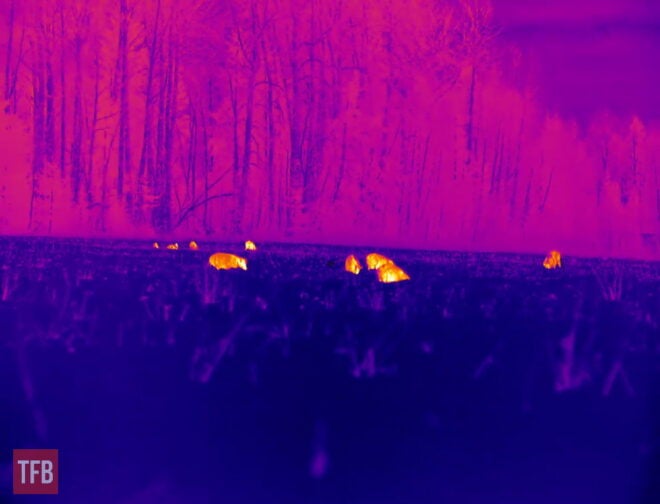
These images are taken in complete darkness. Snow on the ground. About +2C, but everything comes from deep freeze.
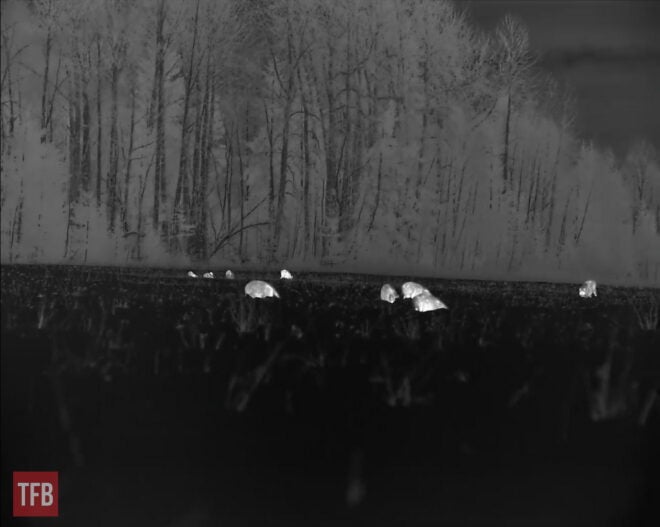
Zooming in. They almost look like hippos.
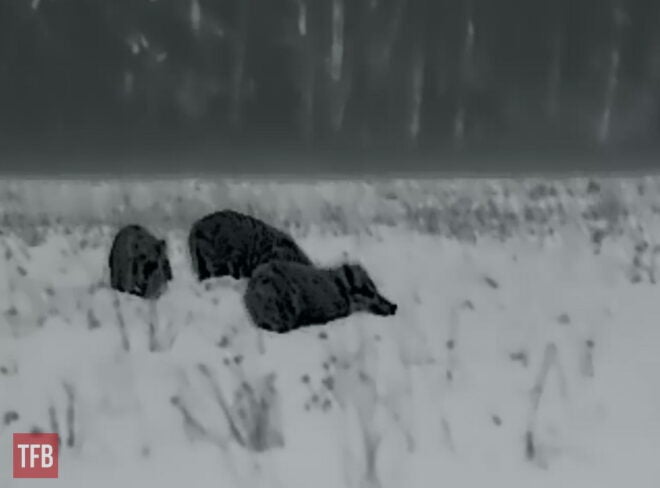
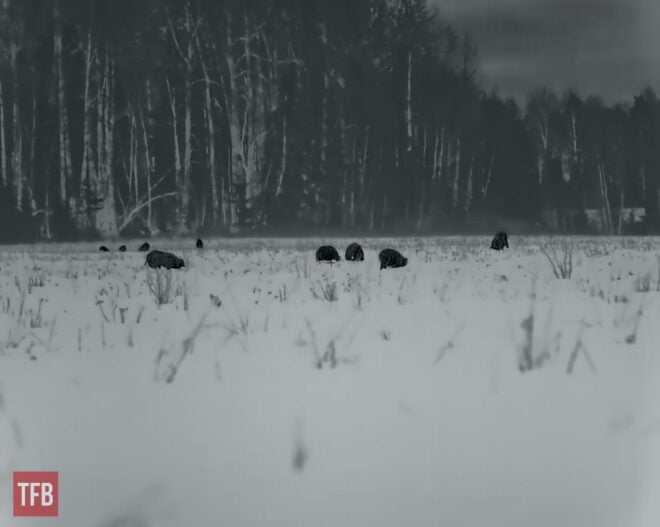
Reproduction in wild boars is prolific, with females capable of producing multiple litters of piglets each year. The piglets are born with distinctive stripes, which fade as they grow older. Wild boars are known for their intelligence, strong sense of smell, and keen awareness of their surroundings, traits that contribute to their survival in diverse environments.
Below: Red hot and its algorithm is not that impressive in my opinion.
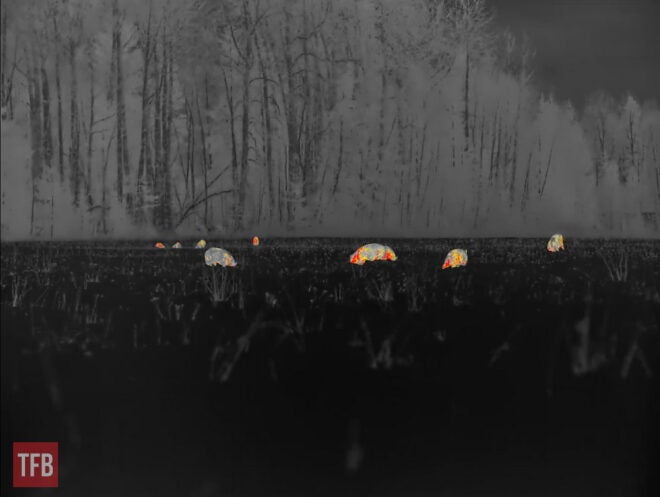
Below: Audi A6 at about 50 meters. Note the trees and the fine detail.
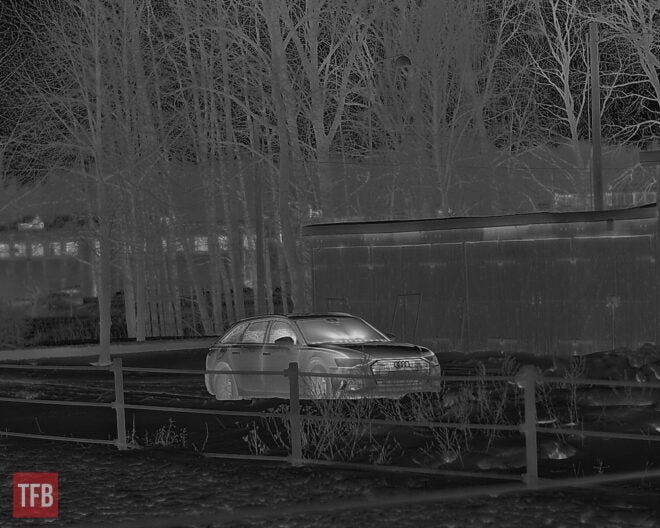
Self-portrait in surrender mode at about 40 meters, with footprints in the snow for depth. Note the small birdhouse in the tree to the left. Surrender to the image quality.
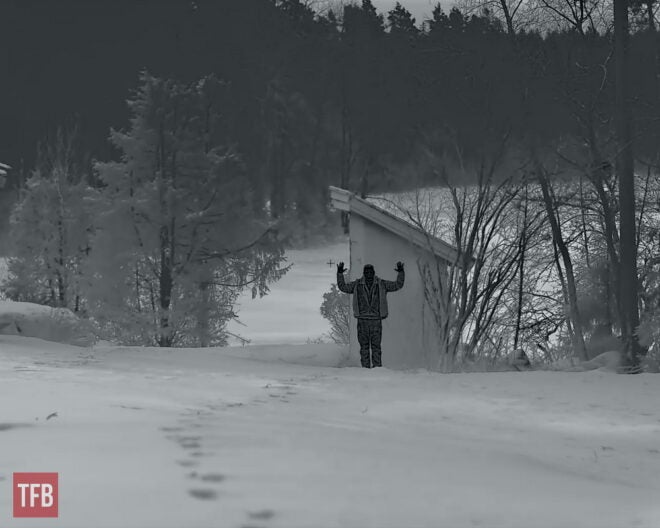
I usually don’t compare thermals side-by-side in my reviews, but here’s an exception. This is a no-name 640x thermal on white hot, showing about the same thing as above. NETD is claimed to be in the 30 mK region (lower is better).
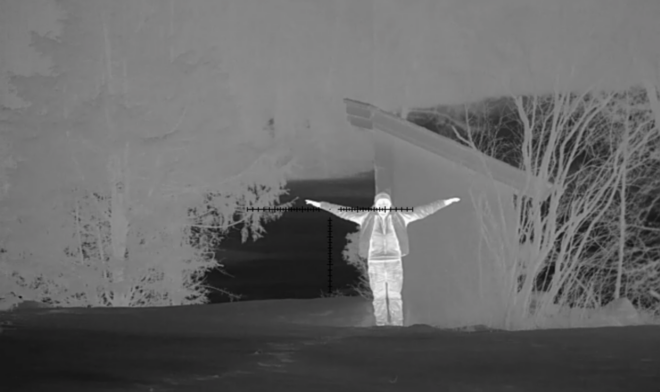
“No-name 640x thermal on white hot”
White hot is good.
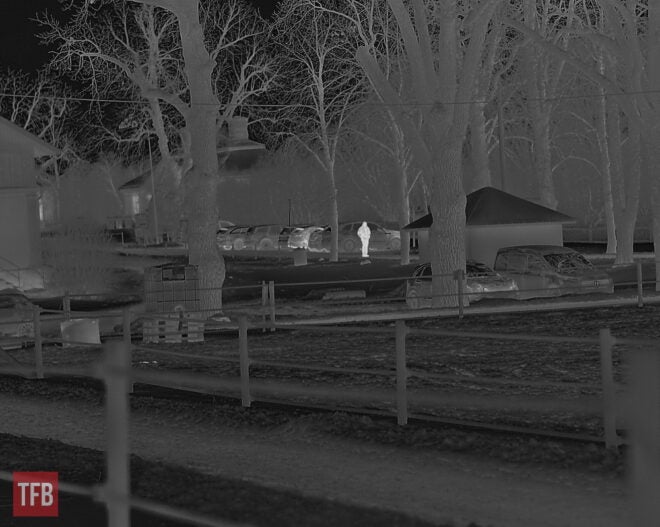
But black hot is absolutely amazing, producing close to black and white quality image of reality.
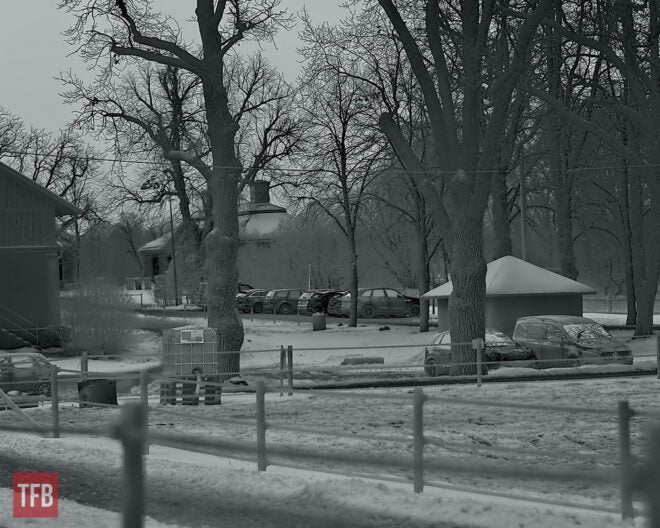
Horses and a worker with a wheelbarrow at about 40+ meters.
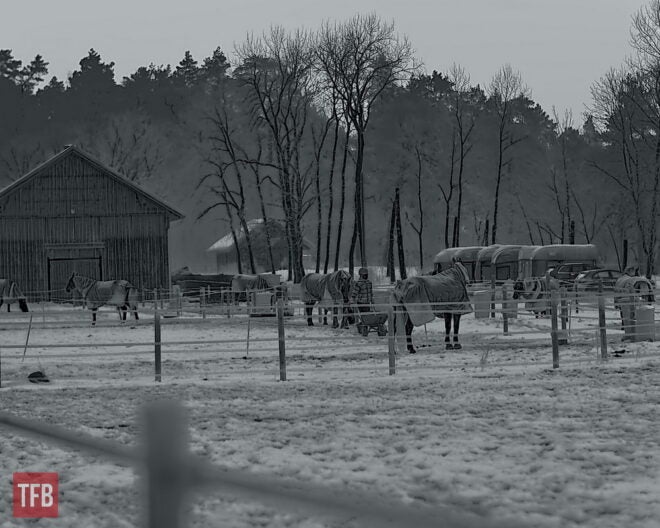
Here’s a collection of modern semi-automatic hunting rifles, some quite rare or non-existent in the USA.
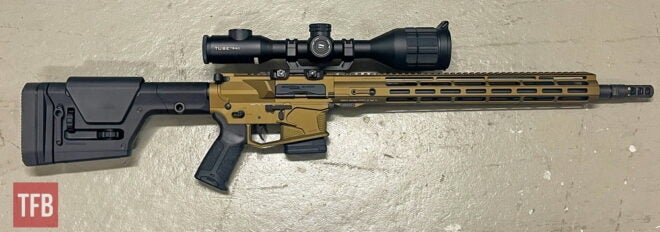
HERA Arms Gmbh in .223 Rem. Made in Germany
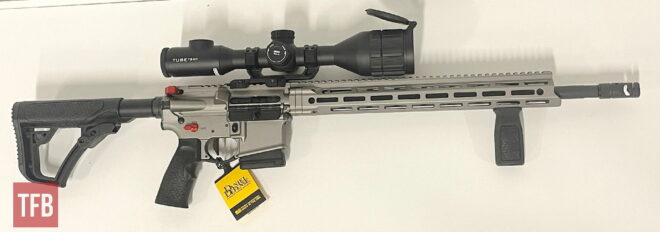
Daniel Defense DDMV7 Pro with TS60.
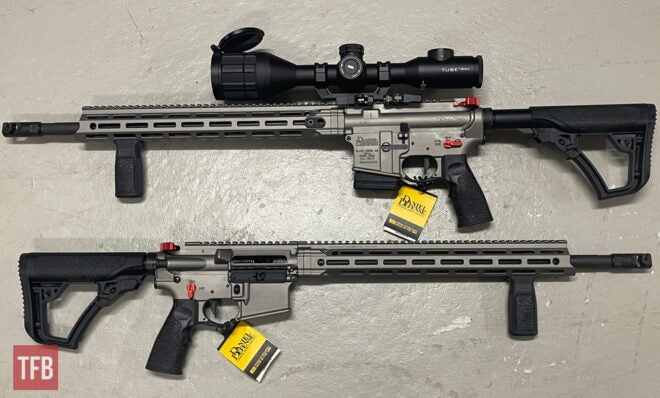
Daniel Defense DDMV7 Pro
Note that the mount here is Infiray Outdoors’ own. It’s a quick detach mount. Unfortunately, I managed to ruin it, as some of the springs flew away never to be found again (they might still be in orbit).
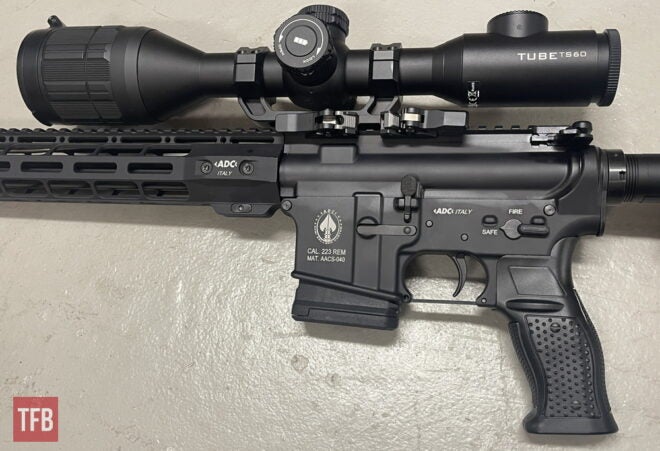
ADC from Italy in .223 Rem.
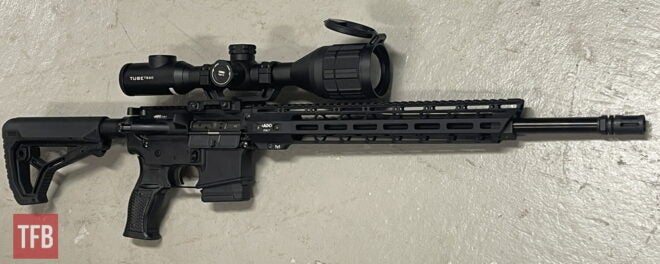
Italian ADC AR15
The ADC AR15 with a smaller-than-normal capacity magazine.
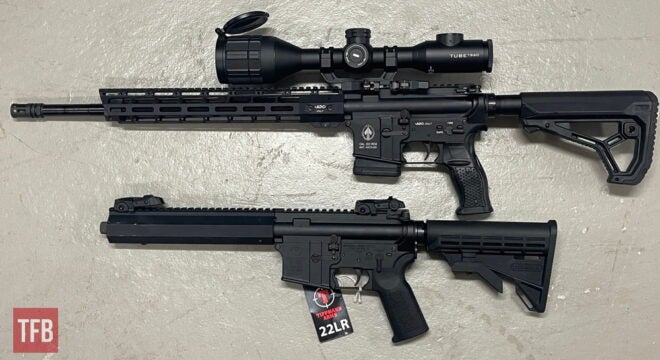
AR15 from ADC Italy and a Tippman Arms SBR in .22LR.
This one below is probably my favorite (no I didn’t shoot it, but I want it). The Daniel Defense DDM5 V5 in 6.5 Creedmoor and Tube TS60 on top.
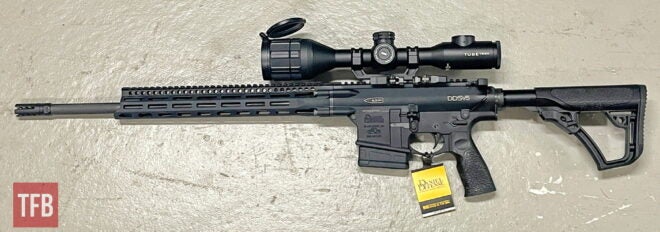
Daniel Defense DDM5 V5 in 6.5 Creedmoor
Just to show you when taking images with the riflescope, we do not have it mounted on a firearm.
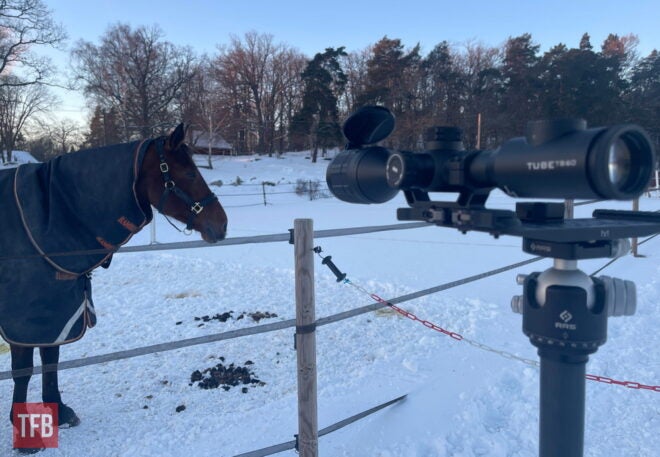
The thermal image of the horse came out really great.
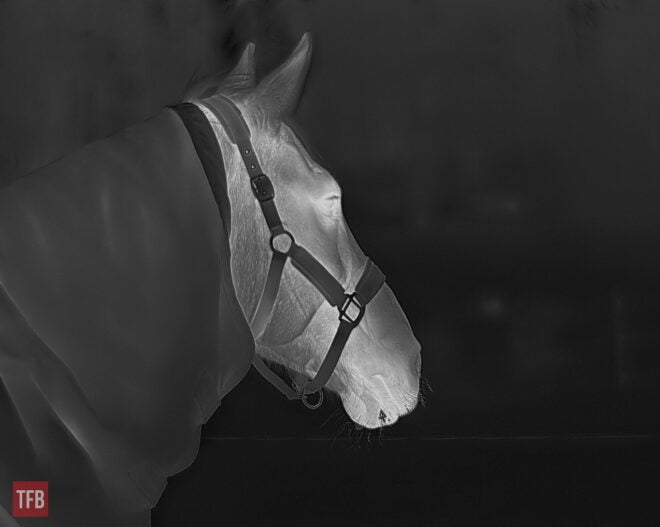
Latency
The image below is difficult to describe, but it’s me doing my best to check the latency in the image. Some thermal units have really poor (high) latency. For a monocular, it doesn’t really matter much, but for a thermal riflescope, it does. High latency means that if your target moves, you will be aiming at what’s history when you pull the trigger, and you will miss or – probably even worse – wound the animal, and have to search for it. The black dot (meteorite-looking) is a strong heat source in the forest, from a wild animal at around 200 meters. There is some latency in the TS60, but not too bad. I had expected worse, based on history. Note that this is a subjective impression, but I used a few other thermals as a benchmark.
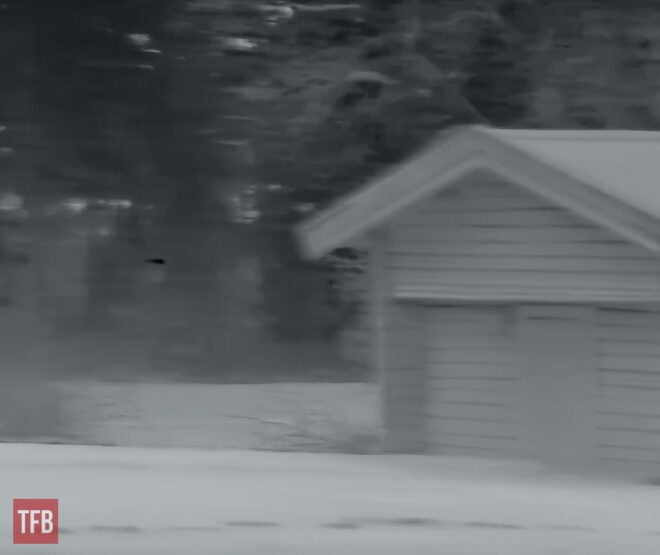
Moose family of three in the snow.
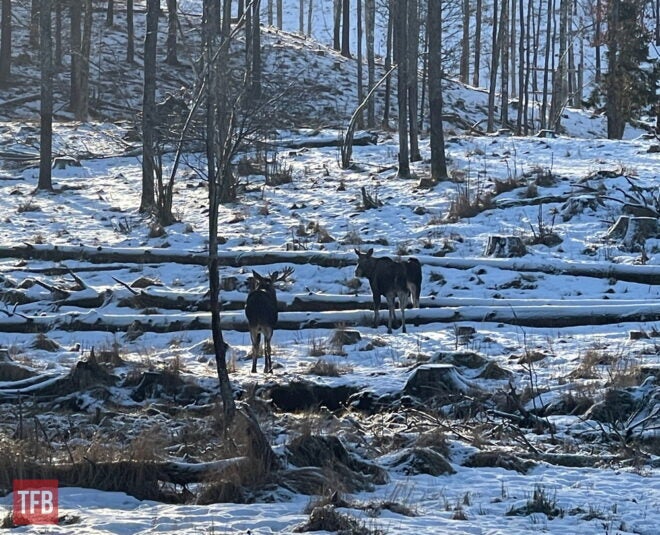
The moose bull only had one horn.
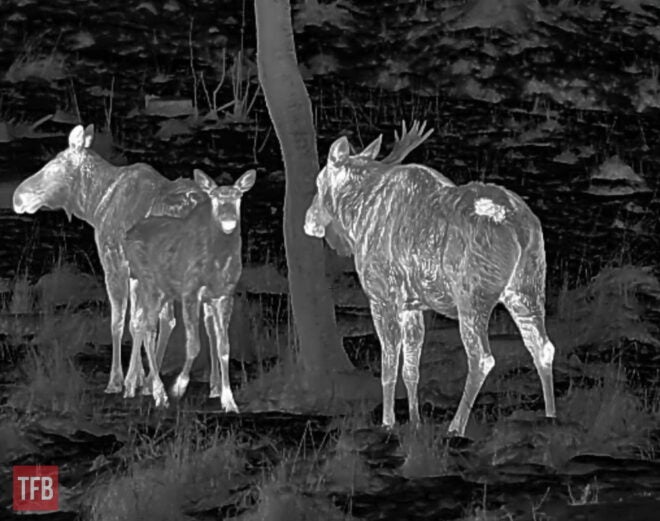
So how well does the Tube TS60 do at distant objects? This is a B road in wintertime and daytime. The antenna is about 1500 meters away, just short of a mile. That’s 5280 feet for those who like to measure distances using body parts as a reference. The main buildings mid-left are just shy of 1000 yards, or 36,000 inches. You can see some of the windows losing heat. There’s an electric powerbox of some kind about 1/3 left in the image, which is 850 yards away. It usually gives a good thermal signature. The oncoming car is about 250 meters away.
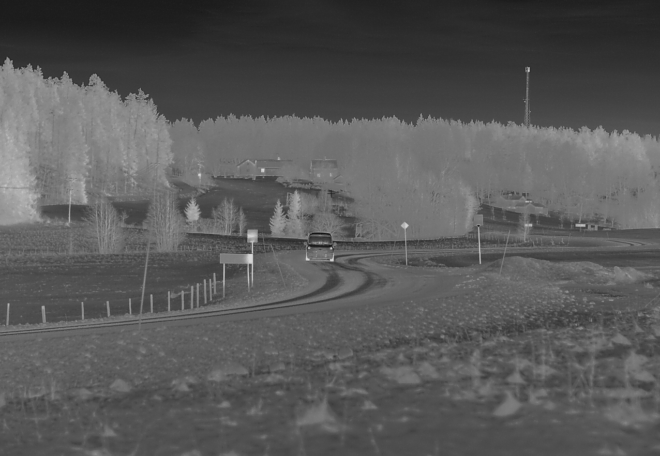
Another comparison, iPhone vs HD thermal.
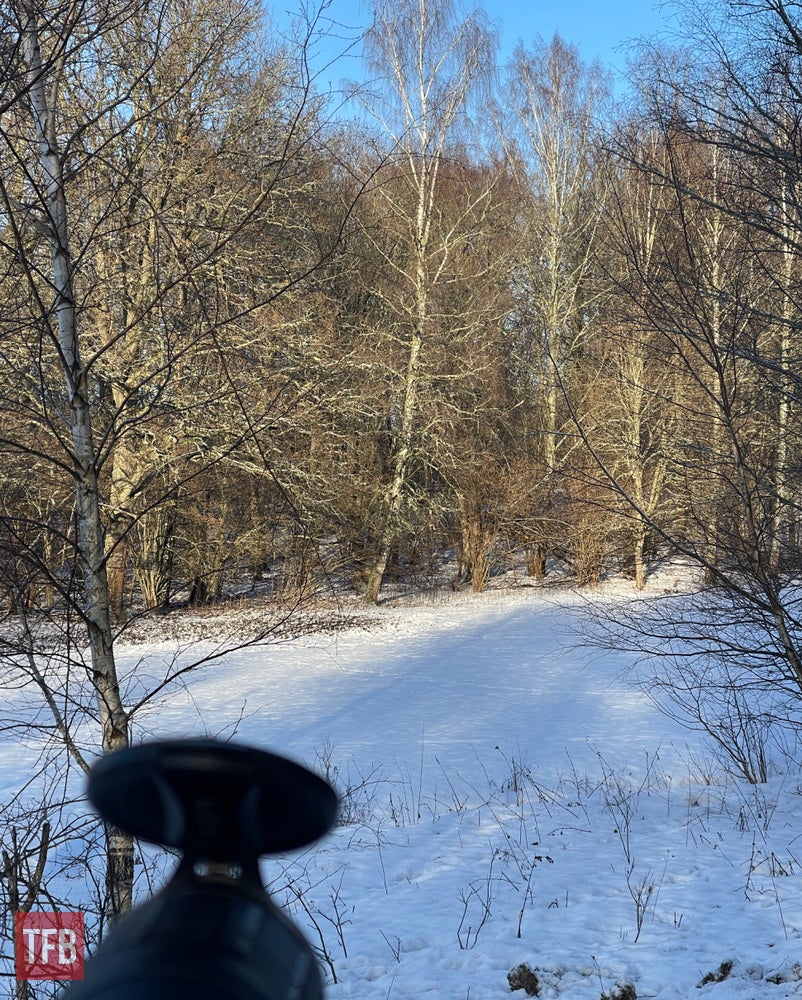
HD thermal imaging as an art form? Well, I think the black hot does rather well. Blair Witch Project-like. If I told you this was a black & white photo, I’m sure most people would trust it.
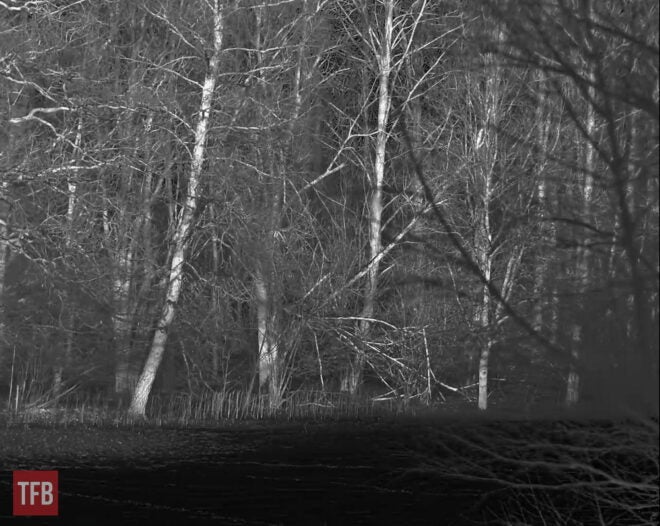
Battery Life
The Tube TS60 has a built-in 6600 mAh battery, with the option to add an additional 18650 standard battery (replaceable and rechargeable). Maximum operating time is claimed to be up to 9 hours (at 22℃).
Price and availability
Being first has its drawbacks. At the time of writing, the Infiray Outdoor TS60 has no official pricing, and we don’t know the availability.
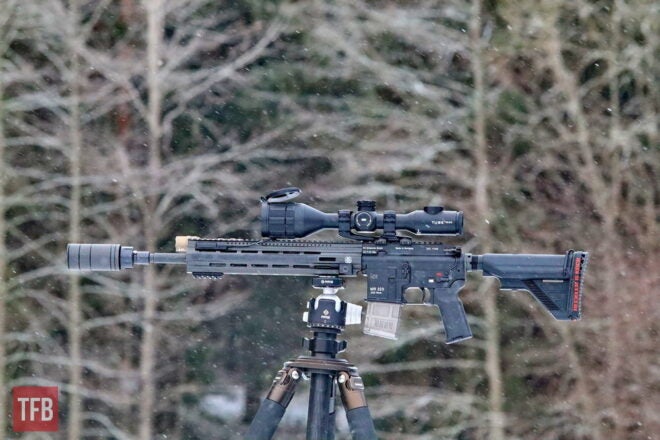
It was a snowy night, and I had a fox on a field. This may not look that impressive, but it’s on a cold, wet and snowy/foggy night at some distance.
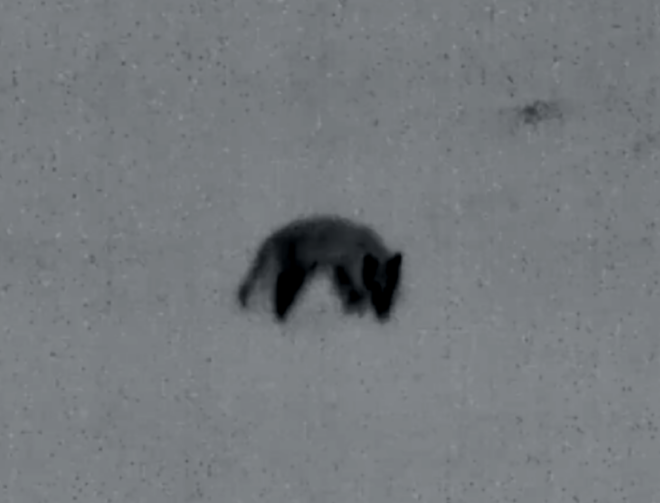
This is on another occasion. Totally black outside, winter with snow on the ground. There’s a hunting tower to the left and the black dot (about center, a little to the right) is a fox at about 550-600 meters. In a still picture, it’s difficult to tell, but I watched it live and I’m pretty confident it’s a fox based on movement and knowing the land, and what walks on it.
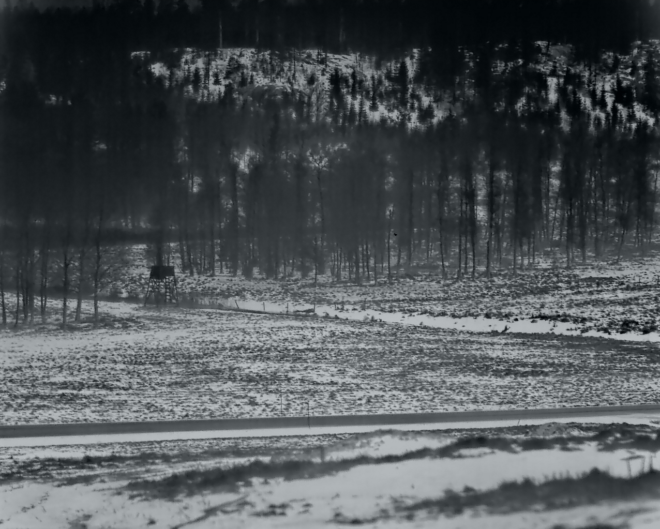
The person is at about 30 meters. Daytime and snow on the ground, and meltwater that reflects the thermal image, like liquid metal. A low NETD (high sensitivity) makes it possible to get detailed “readings” from the objects. The blacker, the hotter.
Below: Bottom left, a person is zeroing another thermal (also under TFB review…) from the prone position. The target is the IPSC paper, with a 15×15 cm (roughly) aluminum sheet that shines like a bright dot at 100 meters. You should be able to spot a mouse at this distance.
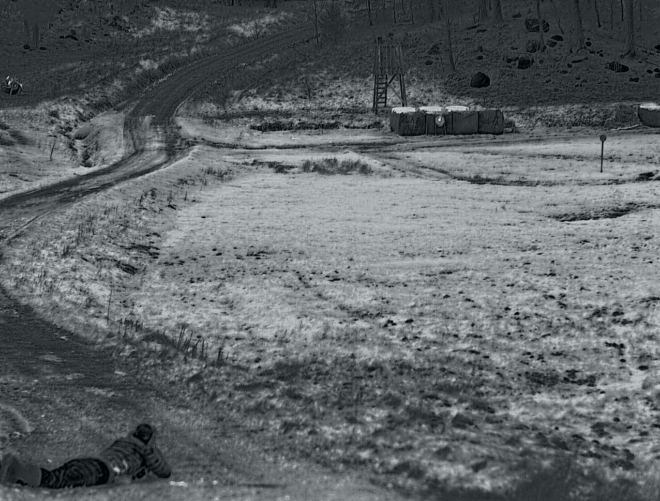
Coming to a conclusion
One of the perks of this hobby is that I sometimes get to test new wonders of technology among the first in the world, under a Non-Disclosure Agreement. This is one of those times. My target is to give an unbiased and independent view, so TFB’s readers can make an educated purchase to suit their needs. If you just want to learn more about the latest, that’s fine too of course.
The Tube TS60 HD thermal scope is a very nice bit of equipment, with brilliant image quality. In the year 2024, we move on from 380x and 640x pixels thermals, into HD Thermals. And it’s such a welcome step and a subject we’ll return to during the year.
One thermal to rule them all? The Infiray Outdoor TS60 does it pretty well. For those who can afford it, it won’t disappoint.
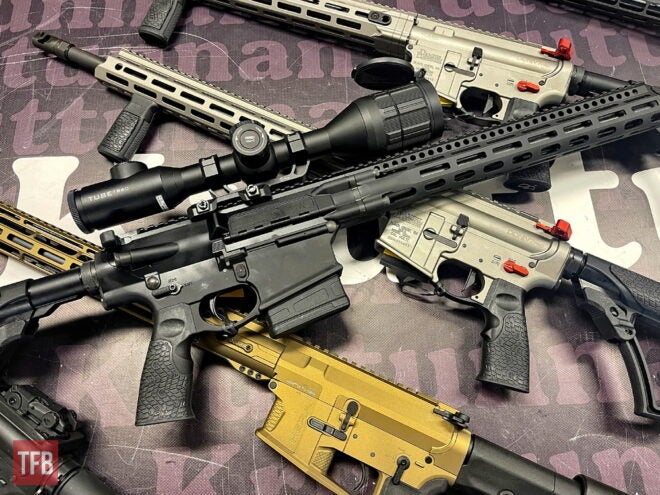
Video of a wild boar, very close.
Because I praise it, I will also point out some of the negatives although some of them are minor. This is a niche riflescope for a niche market, but a very good one at that.
Pros
- Repeat after me: HD Thermal & Low NETD = Very High Image Quality.
- Sets a new standard of resolution and (probably) sensitivity for thermals.
- The black-hot image quality is close to black & white photography – but may not suit hunting situations best.
Cons
- It’s probably a good thing we don’t know the price yet because it’s not going to be cheap.
- 60 mm thermal lens – make sure there’s space on your rail.
- The construction of the lens cap works feels cheap, and cannot be moved around. At this level much more is expected.
- Doesn’t work with Apple USB-C cables (and possibly others).
- Some of the algorithms give a somewhat superficial look to the images/videos.
 Your Privacy Choices
Your Privacy Choices
